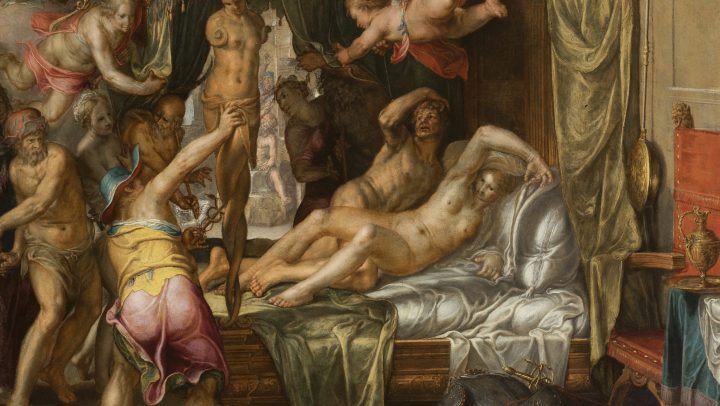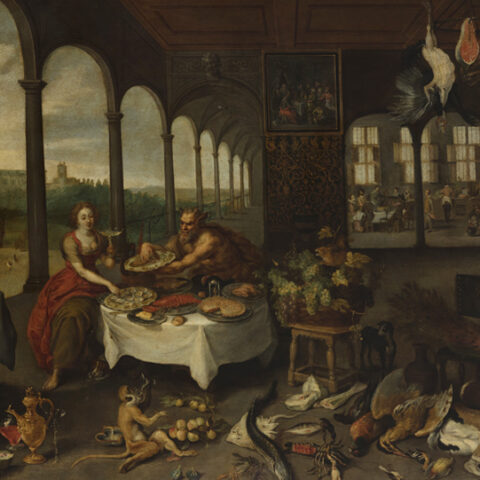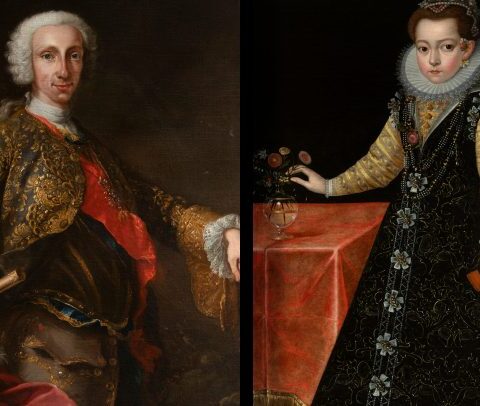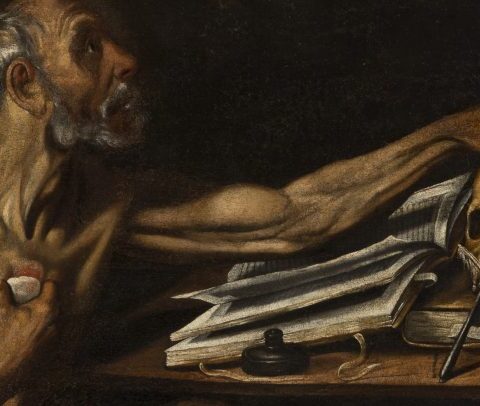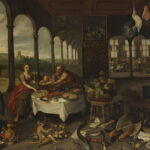Different artists have sought to contribute their vision on such a passionate subject as the adultery of Venus and Mars. Each part of the mythos may be better suited to express some kind of teaching. Lying, lust or vanity are always present within the context of the scene, the result of which discredits the sins within an orderly life. The powers of the gods and their superiority over men go unnoticed in the face of something as human as passion, the deep attraction between two people and the desire it awakens between them. Joachim Wtewael seems to understand these feelings perfectly as he manages to capture them in all his versions.
There are two features of the work that we must take into account in order to get to know it: its format and its level of detail. These two characteristics provoke an intimate relationship between the spectator and the work. We cannot fully appreciate the quality of the painting and its meticulousness if we do not get close enough to the work to almost touch it with our eyes. Contemplating it in this way makes us not only a spectator, but almost a character. The immersion causes there to be no audience other than us and the gods who are situated around Venus and Mars. We are then like Vulcan or Hermes, one more in the story. Achieving this power of attraction in the viewer is not easy, however, Wtewael’s success in this theme shows that he solved it as only a genius could.
This autograph version is the largest and perhaps the most elaborately composed. In the comparison we see that the arrangement of the elements changes between the paintings, being, more than versions, paintings with their own entity, even though they represent the same concrete event of the story. The works, kept in the museums of the Mauritshuis in The Hague and the Getty in Los Angeles, differ from each other. However, if put in comparison, it is obvious that they are like the negative of a photograph, a reverse replica of each other, just like an engraving.

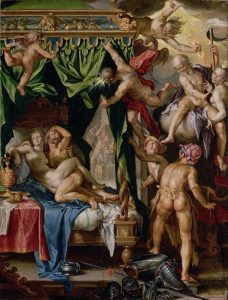
Versions of the Mauritshuis Museum and the Getty Collection
Certain tangible elements are shared among the three versions. Why are they repeated? In our opinion, these are clues that the author has considered fundamental to understand, not only an iconography, but also a moral. Mars’ breastplate and weapons are in all cases lying next to the bed. This tells us how love leaves us defenseless. The condition of nudity is explicit, both for the act itself and the feelings it evokes. The love between the two has apparently robbed them of their divine condition.
Wine is represented by a luxurious decanter on a covered table near the bed. Linking liquor and drunkenness is recurrent in the history of art, its presence in a scene alludes directly to the same effects of wine. It acts as a disinhibitor and in a certain way as an aphrodisiac, causing the deepest desires to come to light. As the Latin saying goes, “et in vino veritas”.
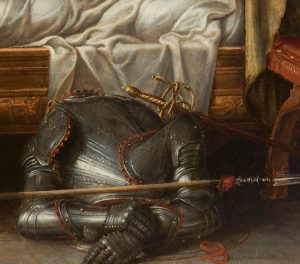
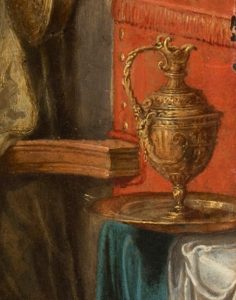
The sense that the painting takes on thanks to details like these would be that love ends up imposing itself without taking into account its own rules, its power sweeps away our defenses leaving us completely naked. Surprise, embarrassment and sensuality are three concepts that immediately strike us with a single glance. The true depth of the painting transcends the sensuality of its content, passion as an expression of love and love as an overwhelming force.

